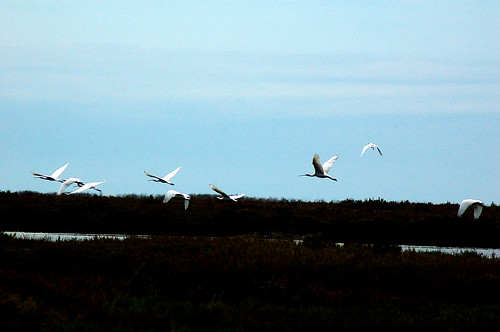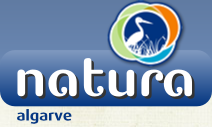The importance of Ria Formosa
11.12.2014 // Natura AlgarveThe largest wetland in southern Portugal spreads up to 11.000 hectares along 60km (38 miles) of coast between Ancão (Loulé) and Manta Rota (Vila Real de Sto. António) forming a lagoon-estuarine system where a vast area of marshes, islets and canals is protected by robust sandbars that form two peninsulas (Ancão and Cacela) and five barrier islands (Barreta, Culatra, Armona, Tavira and Cabanas).

The bars between the islands allow communication with the sea wherein 70% of the water volume in Ria Formosa is daily renewed with each tidal cycle. Up north the Ria cuts up in salt pans, sand banks, mainland and trough the mouth of the waterways that flow into it, being the Gilão River in Tavira the most important. Given the torrential regime of the river and streams the fresh water contribution to the system is modest being the ocean influence quite more significant. Although the moderate riverside urban concentration with Faro, Olhão and Tavira towns that benefit from a prime location on the edge of this wetland, Ria Formosa has maintained a reasonable environmental quality.
Classified as a Natural Reserve in the seventies of the past century, its status rose to Nature Park in 1987 due to a growing need to regulate the urban and touristic pressure as well as the planning of land use around Ria Formosa.
From the sea inland there is a succession of beaches, dunes, marshes, channels, sand banks, salt pans and areas of fresh water influence. This enormous variety of habitats organised in a mosaic and their extension allows diversity in the biological communities. Plants and animals distribute themselves according to the environmental restrictions: salinity gradient, presence of pollution, nature of the substrate, type of vegetation coverage and food resources, among others. The high biological productivity reflects itself in all its environments being especially visible in the communities that inhabit the sandy and muddy bottoms of Ria Formosa which can present large number populations.
The presence of fish in Ria Formosa is quite significant with more than 140 species accounted for. Many of these fishes come here to spawn and breed. Besides shelter and food the area also offers protection for the young fish because the presence of predators is compromised by the special environmental conditions of Ria Formosa (currents, tidal effect, constant changes of the bottoms). The fish that occurs here can be species that complete their life cycles inside the coastal lagoon such as the Seahorse and the Whitebait, they can be migratory like the Eel or use the area in their young stages migrating to the sea when adults such as the Sea Bream and the Sea Bass.

Due to its strategic geographical location, Ria Formosa is an important link in the wetlands network which extends from the North of Europe until the Sub-Saharan Africa being a stopping point for many aquatic birds migrating between the two continents. During Winter time the lagoon area and adjacent environments offer food and shelter to thousands of aquatic birds and it is also a very important nesting area. Ludo in the far west of Ria Formosa and where the S. Lourenço stream flows concentrates significant extensions of salt pans, marshes and estuaries surrounded by agricultural fields, pine woods, a golf course and little human disturbance. This place might be one of the places with the most abundance of wintering aquatic birds. Other animals that occur in the Ria Formosa to point out are the Otter and the European polecat, two mammals adapted to the aquatic environment and regularly registered here.







